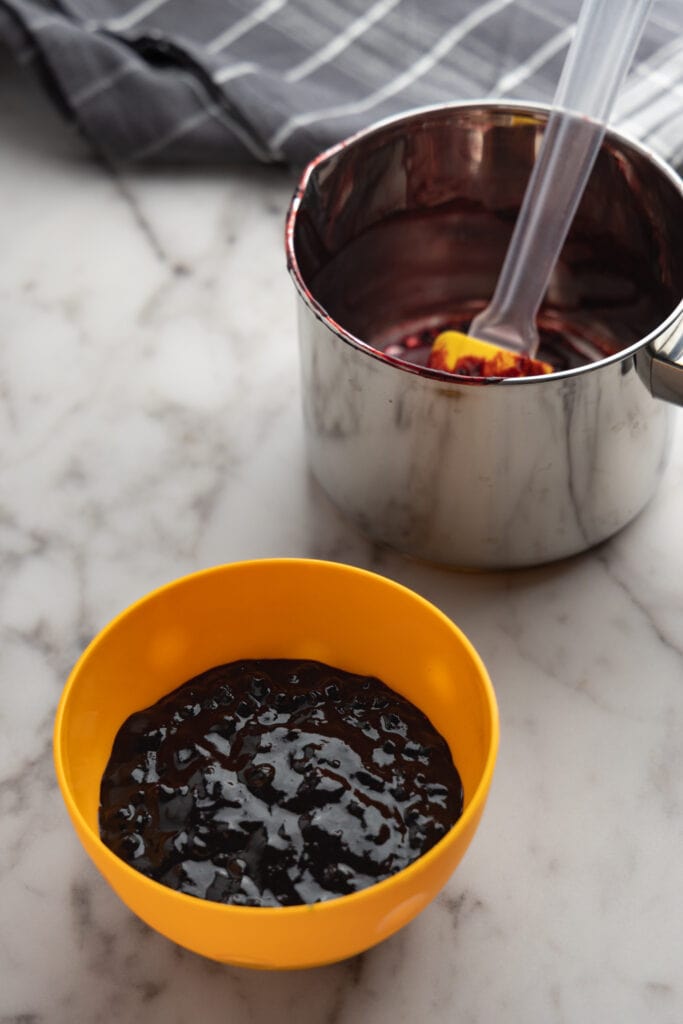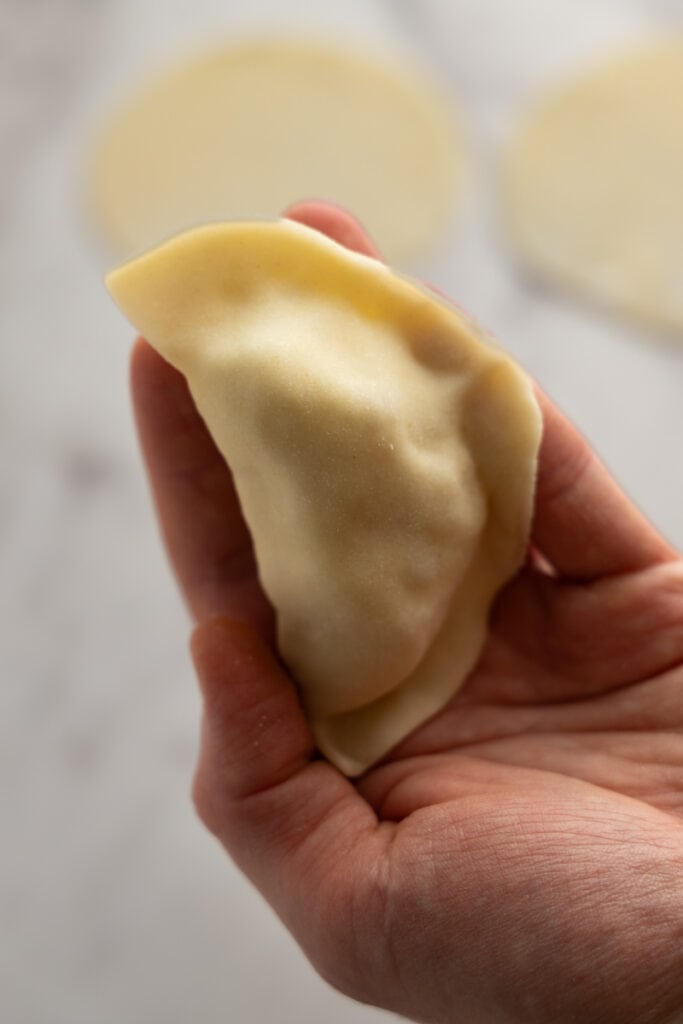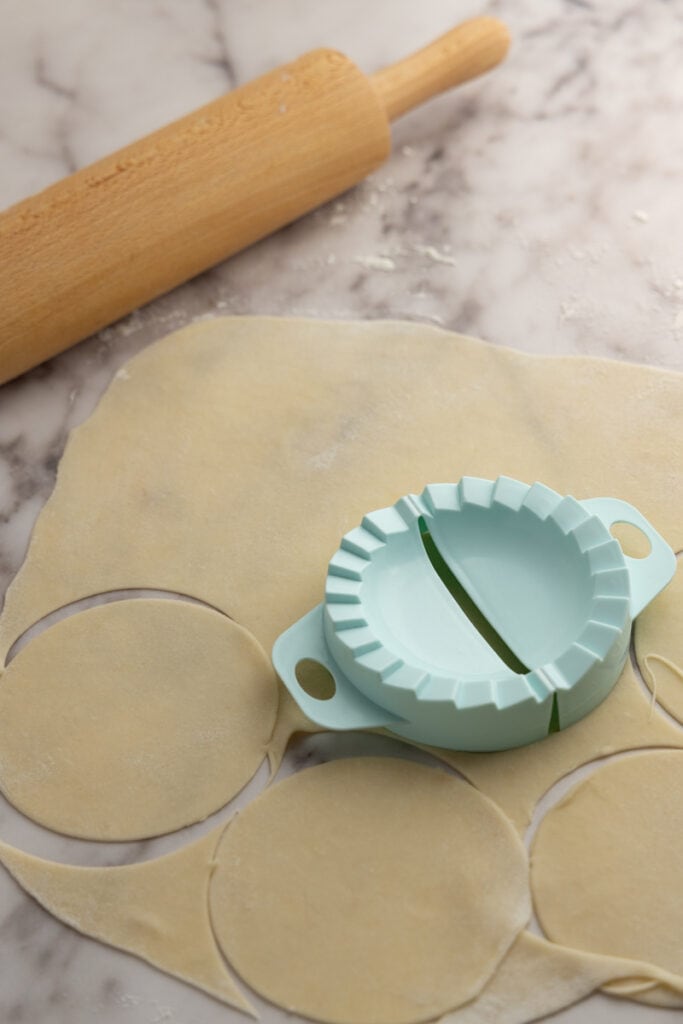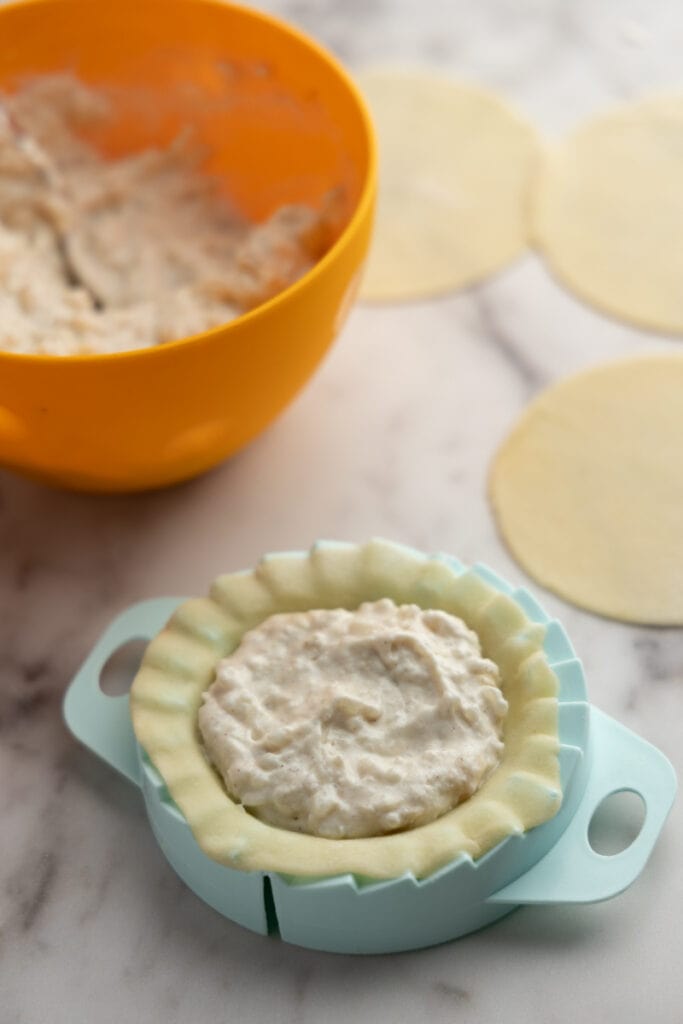Pierogi Fillings: 11 Pierogi Fillings You Must Try
This post may contain affiliate links. Read our privacy policy.
Craving pierogi perfection but can’t quite nail it? Not enough filling options to choose from? We’ve got your back!
This guide is your one-stop shop for pierogi fillings, taking the guesswork out of choosing and preparing your stuffing. But it’s more than that – it’s also a comprehensive handbook on perfecting the art of filling and sealing.
Ever felt the frustration of pierogi bursting open or struggling with saucy fillings? We’ve got the solutions right here.
So, are you ready to up your pierogi game? If so, it’s time to delve into a myriad of pierogi filling recipes and learn how to snugly wrap them in a doughy embrace.

First time making pierogi? Check out our guide to homemade pierogi to learn everything you need to know about the process.
Pierogi Fillings
When it comes to stuffing your homemade pierogi, your imagination is the only limit. But let’s lay down one golden rule: we’re (generally) looking for a filling that’s sturdy yet malleable, one that won’t try to escape and create a dumpling disaster.
So, where does that leave us? With a whole host of choices!
Here are some traditional pierogi fillings that continue to be served today.
Meat

Pretty much any ground meat can work a charm in meat pierogi. Season it to your heart’s content, but I’ll guide you through a simple salt-and-pepper version that you can easily tailor to your taste.
Check out our meat pierogi recipe here.
Potato and Cheese (or Pierogi Ruskie)

An all-time classic. These little goodies are packed with a smooth blend of mashed potatoes and cheese. Back home in Poland, we reach for farmer’s cheese, but swapping in cream cheese or even cheddar cheese brings a delightful American twist.
Here’s my recipe for potato and cheese pierogi.
Sauerkraut and Mushrooms Pierogi
Sure, these dumplings are a hit during the Christmas season, but who says we can’t relish them all year round?
As with any good dish, the humble pierogi has also evolved with the times, welcoming a medley of modern fillings into the fold. Let’s cover some popular options.
Spinach

For this filling, we team spinach with the tang of feta cheese (an absolute flavor bomb), but you can easily forego the cheese for a vegan twist with a hint of garlic.
Here’s our recipe for spinach pierogi.
Lentils

Another vegan-friendly pierogi version that is both delicious and straightforward to prepare. Trust me, lentils find a very cozy home in a pierogi!
Potato
A modern spin on the classic, sans cheese. Think creamy potatoes jazzed up with your favorite additions, be it onions, sour cream and chives, or any other dreamy combo.
Asparagus

This one pairs asparagus with the creaminess of mascarpone cheese for a truly unique pierogi filling. If asparagus is in season (and doesn’t require selling a kidney), I wholeheartedly recommend giving this a shot.
Here’s the asparagus pierogi recipe if you want to try it out.
And remember, the beauty of pierogi is in their adaptability. This means, drumroll please… dessert pierogi! Here are some crowd-pleasers, most of which are fruit pierogi.
Apple

With their year-round availability and ease of preparation, apples are the perfect starting point for your sweet pierogi journey.
Here’s my apple pierogi recipe.
Strawberry

There are a couple of ways you can go with this one: a luscious strawberry sauce or simple whole strawberries. The former requires more effort and it’s more difficult to work with due to its consistency, but it pays off with incredible flavor, while the latter is a quick-and-easy route that still promises a good time.
Interested? Check out my recipe for strawberry pierogi.
Blueberry

Blueberry pierogi run in the same lane as their strawberry counterparts, and both can happily accommodate fresh or frozen berries.
Here’s the recipe for blueberry pierogi.
Farmer’s Cheese

This sweet treat enjoys more popularity in Poland than in the US, simply due to the wide availability of farmer’s cheese back home. It may take a bit of hunting in the US, but if you do score some, give these a go. Preparing the filling is a breeze, and it’s solid enough to stay put inside the pierogi, even if they suffer a minor tear.
Check out my recipe for farmer’s cheese pierogi.
So there you have it. From traditional to modern and sweet, there’s a pierogi filling for everyone.
Sweet Cheese

No access to farmer’s cheese? You can still make sweet cheese pierogi.
The trick here is to use cream cheese combined with overcooked white rice. That combo makes the filling firm enough to work with and makes a great base for a variety of flavorings.
Check out my sweet cheese pierogi recipe here for more details.
Plum

Got a whole bunch of plums and looking for ideas on how to use them? Make plum pierogi. It’s one of the simplest pierogi recipes to make, so it’s a perfect option even if you’re a pierogi newbie.
Tips for Making Pierogi Filling
When making any pierogi filling, keep these in mind:
- Choose the right pierogi dough. While my best pierogi dough works great with pretty much any filling, that’s not the case for all pierogi dough recipes. If you plan on making dessert pierogi, you probably should skip whole wheat dough and stick with something that’s based on all-purpose flour.
- Season to taste. When it comes to seasoning, assume the recipe is only a starting point, and it’s up to you to season the filling to your liking. That’s why I always mention when to season to taste in my recipes. You don’t want to be tasting raw foods before you cook them, so you need to consider the order of adding ingredients to the filling. For instance, in my meat pierogi recipe, I recommend tasting the cooked meat before you mix in the raw egg.
- Reduce liquid. We want the filling to be firm, not mushy, so if there’s a lot of liquid, you need to get rid of most of it before you use the filling. Sometimes, that means evaporating the extra water on the stove (as in my recipe for asparagus pierogi). Other times it means draining the water (as in lentil pierogi) or thickening the sauce using a cornstarch slurry (as in my recipes for blueberry and strawberry pierogi).
- Refrigerate to make it firmer. Refrigerating the filling overnight makes it firmer, which typically means it’s easier to work with. If the filling is too soft, leave it for a couple of hours in the fridge before using.
- Some fillings are easier to work with. The firmer the filling, the easier it’s to work with. So when you’re first starting out, I recommend going with meat, lentil, whole strawberry, or farmer’s cheese pierogi. These fillings are quite firm and stay intact even if there are some small holes in the dough. Looser fillings, such as strawberry sauce filling, are more difficult to work with and might slowly spill out of the pocket if there’s a hole.
Now that we’ve got the filling ready, let’s talk about forming the dumpling pockets.
How to Fill Pierogi
There’s more than one way to fill a pierogi. Here’s a friendly guide on how to stuff these tasty morsels like a pro.
Tabletop
Step one, you’re going to start by carving out palm-sized circles from your dough. Then, plop a spoonful of your chosen filling right in the center. With a swift fold of the dough over the filling, press the edges together starting in the middle.
 Add filling
Add filling Squeeze together in the middle
Squeeze together in the middle Squeeze one side
Squeeze one side Finish the other – the dumpling is ready
Finish the other – the dumpling is ready
This approach is super for sturdy fillings that behave themselves and don’t try to run away – it’s as straightforward as it can be.
The Palm Cradle
Now, this one is a touch more tricky, but absolutely crucial for fillings that love to make a mess.
Once again, start by carving your dough circles, but instead of laying them flat, cup your hand into a cozy little nest and rest the dough circle in there. Voila – no more runaway filling!
 Grab the circle
Grab the circle Add filling
Add filling Pinch the middle together
Pinch the middle together Seal one side
Seal one side Finish with the other
Finish with the other
After adding the filling, start folding the dough over it, sealing the edges together. Once again, start from the middle and slowly make your way to one side until the very end. Be mindful not to let that filling spill over to the other side.
Next, you’ll want to stand the pierogi up, sealed side down, and finish off the sealing job from the center outwards. It’s a bit of a balancing act, but it’s the best method I’ve discovered.
Using a Pierogi Maker
For starters, here’s what a typical pierogi maker looks like:

If you’re looking to use a pierogi maker, here’s how you ace it:
 Cut circles
Cut circles Stretch and place the dough circle in the mold
Stretch and place the dough circle in the mold Add filling
Add filling Seal tight
Seal tight Pierogi is ready
Pierogi is ready
Start by cutting your dough circles using the bottom side of the maker. This guarantees that your circles are the right size.
The next step is to give the dough a slight stretch so it’s a smidge larger than the maker.
Lay your dough into the maker, making sure to press it against the mold (both the pocket and the sealing areas), like dressing it up in a little mold tuxedo. If you skip this, the dough often collapses after adding the filling. And then you’re back to stretching it all over again before you can seal it.
(It doesn’t have to perfectly cover the mold (see my photo above), but it should be enough to form a tight seal.)
Next up, add the filling. Take care to spread the filling evenly in the pocket, and make sure you’re generous but not overly so. If you’re finding dough tears or filling escaping, chances are you’re being a little too hospitable with the filling.
Finish off by bringing the two sides of the maker together for a quick, satisfying press. Remove the pierogi, and give the seal a once-over. Any tiny holes? Just give the dough a little pinch to fix them right up.
Tips for Filling Pierogi
Here are some essential tips to fill your dumplings with style and keep them from bursting open mid-cook:
- The air-free affair. You want your pierogi to be as snug as a bug in a rug, with minimal air in the pocket. This avoids the risk of your dumpling going pop (all thanks to air expansion when heating), helps the pierogi keep its shape, and distributes the filling evenly. The result? Pretty pierogi that deliver the perfect balance of dough and filling with every bite. Say goodbye to those disappointing mouthfuls of empty dough!
- Thicker dough for saucy fillings. Planning on packing in some juicy, saucy fillings? Then it’s time to muscle up your dough! A thicker dough is your shield against potential pierogi explosions, which can be a common fate for the more moist fillings. So, don’t be afraid to go a little thicker on the dough – it’s your defense against a messy pierogi disaster.
- Seal the deal with moisture. If your dough is a little stubborn and refuses to stick together, give it a tiny splash of water. It’s like the glue that holds your pierogi together. Most of the time, it’ll work wonders. But remember, balance is key. Too much moisture can turn your sealing mission into a slippery slope, especially when dealing with saucier fillings. It’s a delicate dance of wet and dry that makes a perfect pierogi seal.














